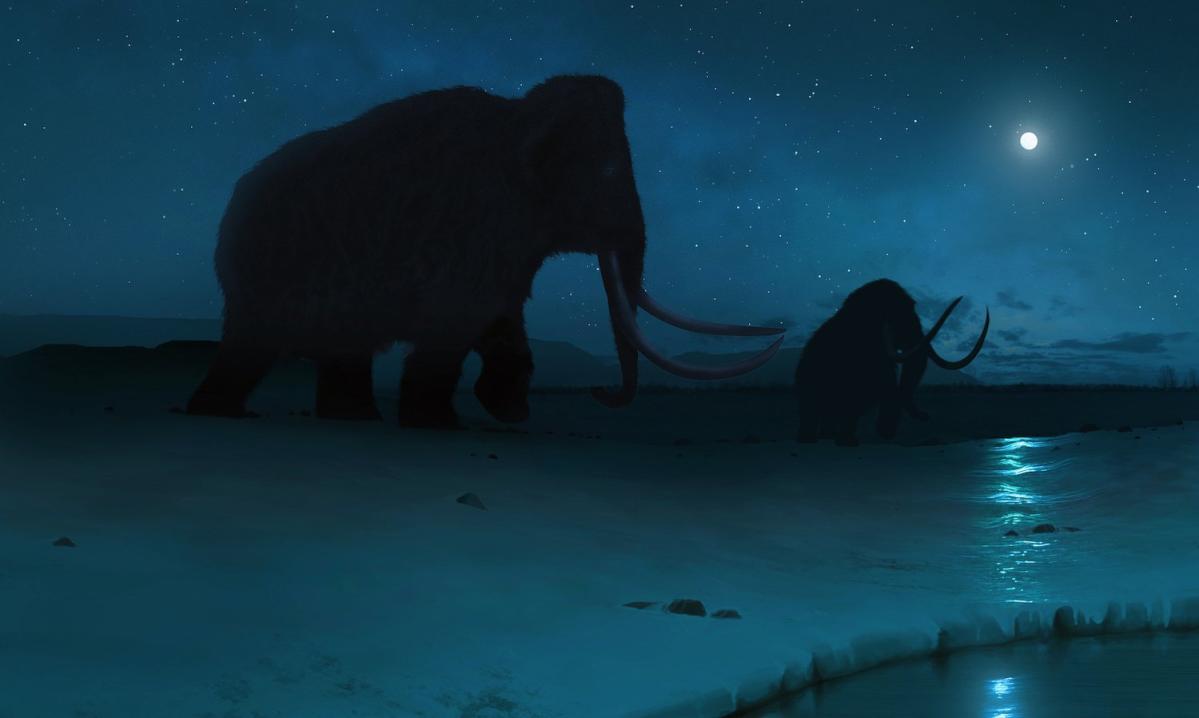Unraveling the Mystery: Why the Bering Bridge Welcomed Humans but Excluded Animals
The Bering Land Bridge, a natural land connection between Asia and North America, has long been a subject of fascination for scientists and historians alike. This ancient route allowed early humans to migrate from Siberia into what is now Alaska, leading to the eventual peopling of the Americas. However, despite its apparent openness, the Bering Bridge seemingly restricted the movement of animals. Recent research has shed light on the ecological and evolutionary factors that allowed humans to cross this land bridge, while simultaneously preventing many animal species from doing the same. This article delves into the mystery, exploring the scientific discoveries behind this phenomenon and its broader ecological implications.
The Bering Land Bridge: An Ancient Passage
The Bering Land Bridge, also known as Beringia, existed during the last Ice Age, when global sea levels were much lower due to the accumulation of ice sheets. This exposed a wide, grassy corridor that connected Siberia in Asia with Alaska in North America. Archaeological and genetic evidence suggests that early humans crossed this land bridge around 12,000 years ago, possibly even earlier, marking the beginning of human settlement in the Americas.
While this migration is well-documented, it remains a subject of debate as to how and why only humans successfully traversed the Bering Bridge, while large numbers of animals did not follow the same path. Recent studies have provided compelling explanations that combine ecological, geographical, and biological factors in this puzzle.
The Ecological Challenges for Animals
One of the key reasons animals were restricted from migrating across the Bering Land Bridge lies in the unique ecological environment of the region during the Ice Age. Beringia was not a uniform landscape, but rather a patchwork of different ecosystems that changed dramatically over time. During certain periods, the land bridge was covered in vast, treeless tundra, while other times it featured dense grasslands and wetlands. These shifts in the environment created challenges for animals, particularly those that were not adapted to such drastic changes.
Climate and Seasonal Changes
The most significant factor in limiting animal migration was the harsh climatic conditions of the time. As the Ice Age progressed, extreme cold, limited food resources, and shifting seasons created a challenging environment for large herbivores and predators alike. For instance, species like the mammoth, which roamed across much of the land bridge, required specific vegetation, such as grasses and shrubs, to survive. The fluctuating availability of these food sources during different seasons likely restricted the ability of these animals to migrate effectively.
On the other hand, early humans were more adaptable. They developed tools, shelters, and strategies that allowed them to survive in environments that were inhospitable to most animals. The advent of hunting and gathering techniques, combined with the ability to fashion clothing from animal hides, helped early humans survive in cold climates and travel long distances with relative ease. This human adaptability played a pivotal role in their success at crossing the Bering Land Bridge, whereas animals were often more confined to specific habitats.
Geography and Landscape Features
The landscape itself posed additional challenges to animal migration. While the land bridge was wide and expansive, it was also not a simple flat plain. It featured rivers, lakes, and mountain ranges, which created natural barriers for large animals that were not adept at navigating such terrain. In contrast, early humans, especially those in small, mobile groups, were better equipped to cross these obstacles using primitive tools and strategies.
Some scientists argue that certain animal species were simply unable to adapt to the new habitats they encountered across the land bridge. For example, many species of megafauna, such as mammoths, mastodons, and giant sloths, thrived in specific ecological niches that were disrupted by climatic changes. When the environment changed too rapidly, these species either became extinct or retreated to other parts of the continent, unable to cross the bridge.
Human Advantages: Tools, Culture, and Technology
Humans, on the other hand, had distinct advantages that enabled them to overcome the geographical and climatic barriers of the Bering Land Bridge. Their ability to create and use tools was one of the most important factors. Unlike animals, humans could craft spears, knives, and other implements that helped them hunt, gather, and protect themselves from predators in challenging environments.
Cultural and Social Structures
In addition to their physical tools, early human groups exhibited social structures that facilitated survival and migration. They likely traveled in groups, which allowed them to share resources, knowledge, and labor, making it easier to survive in harsh climates. The development of language, social cooperation, and later, the domestication of dogs, played a crucial role in their ability to explore new territories.
As humans moved across Beringia, they also established communication networks with other groups, which helped them exchange knowledge about food sources, shelter, and migration routes. These cultural and technological advances gave humans an edge over animals, allowing them to survive and even thrive in the regions they encountered.
Implications of the Bering Land Bridge for Modern Ecology
The study of the Bering Land Bridge migration has broader implications for understanding both past and present ecological dynamics. The challenges faced by animals during the Ice Age are strikingly similar to the pressures many species face today, including habitat fragmentation, climate change, and the loss of biodiversity.
Lessons for Conservation
By studying the conditions that limited animal migration during the Ice Age, modern conservationists can gain valuable insights into the factors that influence species’ movement patterns. For example, as climate change continues to alter habitats around the world, many species will face similar ecological barriers to those experienced by animals during the Bering Land Bridge period. Conservation efforts that aim to preserve migratory corridors and provide connectivity between ecosystems may be crucial for maintaining biodiversity in the face of changing environmental conditions.
Relevance to Evolutionary Studies
The Bering Land Bridge also provides critical information for understanding the evolution of species. The isolation of species across different continents, as well as the subsequent mixing of populations after the land bridge was no longer passable, led to the development of distinct genetic traits and adaptations. Studying how early humans and animals adapted to Beringia’s challenges helps scientists better understand evolutionary processes, particularly in the context of migration and environmental change.
Conclusion: A Singular Chapter in Human and Animal History
The mystery of why the Bering Land Bridge welcomed humans but excluded many animals is a fascinating example of how adaptability, culture, and technology can shape the course of history. While early humans leveraged their social structures, tools, and ability to withstand extreme conditions, animals faced ecological, climatic, and geographical challenges that they were often ill-equipped to overcome. Understanding these dynamics not only provides insight into human migration patterns but also offers valuable lessons for modern ecology and conservation efforts. As climate change continues to reshape the planet, the legacy of Beringia may help guide our approach to preserving the planet’s biodiversity and managing the movement of species in an increasingly fragmented world.
For more on the implications of the Bering Land Bridge in understanding ancient migrations and modern ecological challenges, visit National Geographic’s exploration of Beringia.
Additionally, learn more about the current state of conservation efforts across the globe at IUCN’s official website.
See more TED Talks World

